How Do Farm Animals Contribute To Global Warming
Inside the Academy of California, Davis, a Holstein cow has its head and neck sealed closed inside a big, articulate-plastic chamber that resembles an incubator for newborns. While giant tubes to a higher place the bedchamber pump air in and push air out, the cow calmly stands and eats her feed. Equipment inside a nearby trailer spits out information.
This is how Frank Mitloehner measures gases that come from cows' stomachs and ultimately contribute to global warming. Quantifying these emissions is key to mitigating them, and Mitloehner is i of several UC Davis researchers investigating economical ways to make livestock production more environmentally sustainable around the globe.
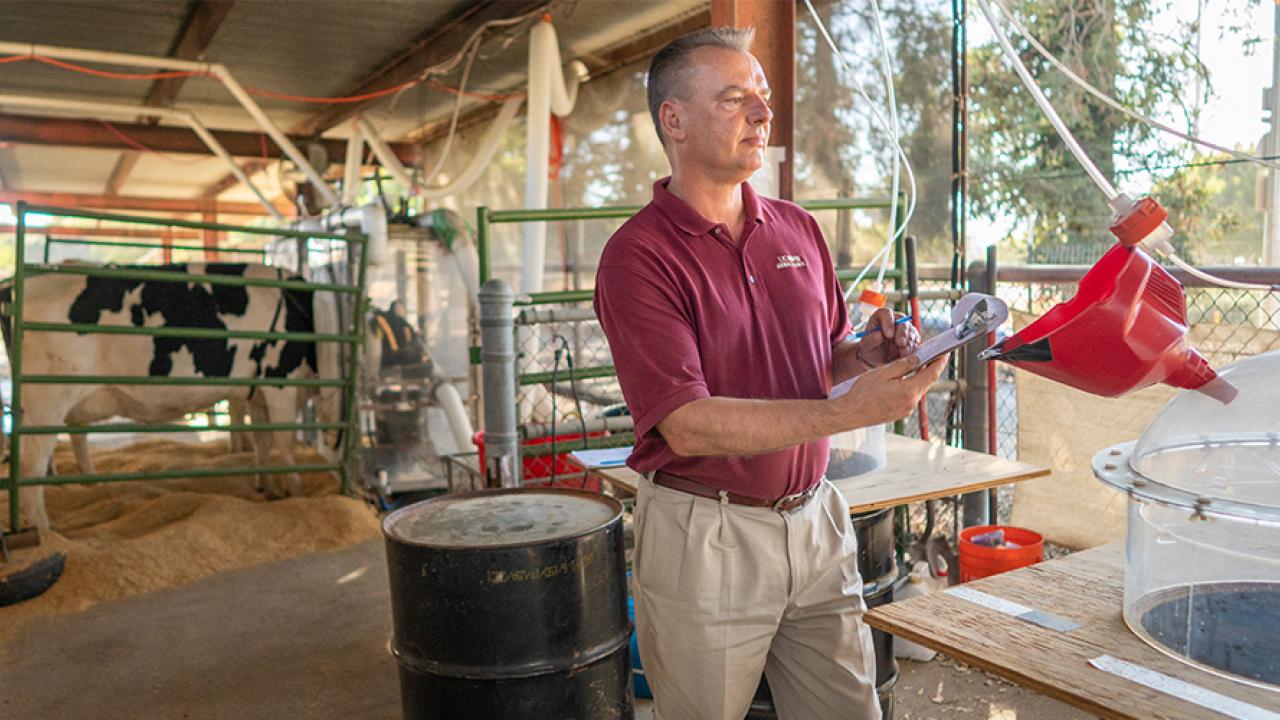
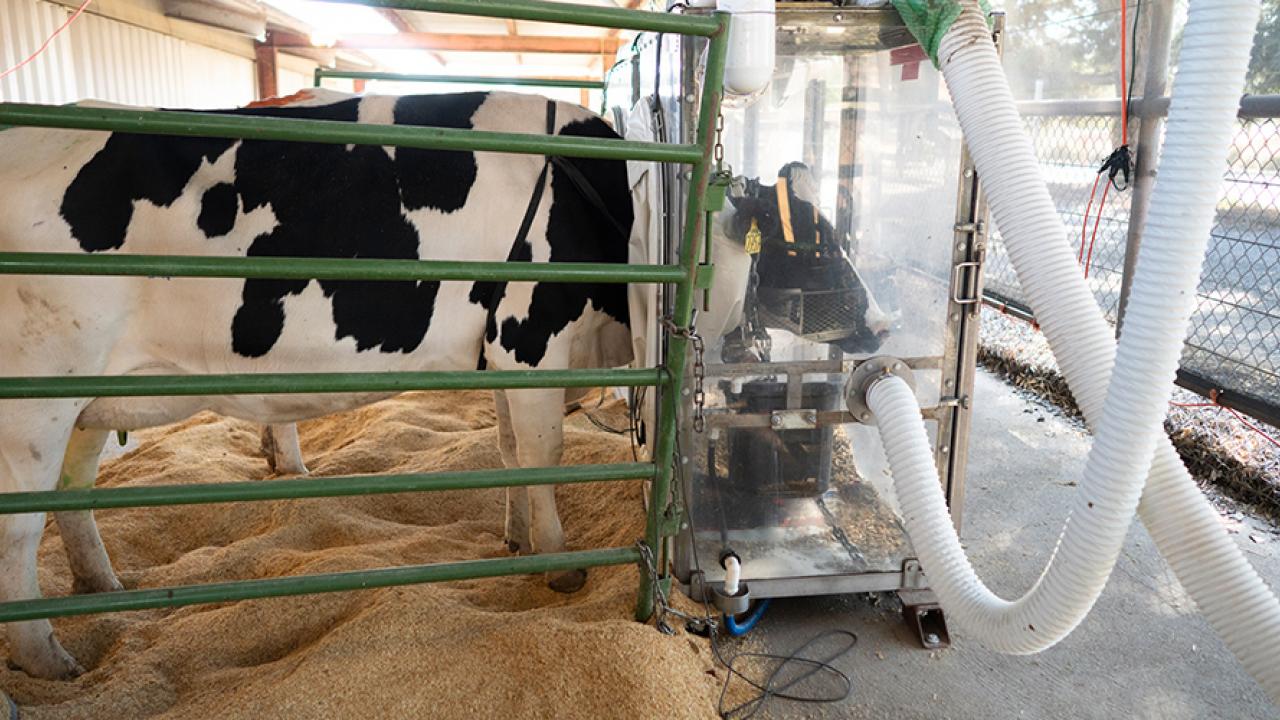
READ More:Unfold, the official UC Davis podcast, examines the bad rap cattle receive as an unfriendly producer of climate-changing greenhouse gas.
Cattle are the No. 1 agricultural source of greenhouse gases worldwide. Each year, a single cow will discharge nigh 220 pounds of marsh gas. Methane from cattle is shorter lived than carbon dioxide but 28 times more potent in warming the atmosphere, said Mitloehner, a professor and air quality specialist in the Department of Animal Science.
With the escalating effects of climate change, that fact has advocates urging the public to eat less beef. They contend it's an unsustainable diet in a world with a population expected to reach near 10 billion by 2050.
Mitloehner has openly challenged this view, writing in a contempo commentary for The Conversationthat "forgoing meat is not the environmental panacea many would take us believe."
Cows and other ruminants account for but 4 percent of all greenhouse gases produced in the United States, he said, and beef cattle but 2 percent of direct emissions.
Better breeding, genetics and nutrition accept increased the efficiency of livestock product in the U.S. In the 1970s, 140 million head of cattle were needed to meet demand. Now, only ninety million caput are required. At the same time, those 90 1000000 cattle are producing more than meat.
"We're now feeding more than people with fewer cattle," Mitloehner said.
The global trouble
Shrinking livestock's carbon hoofprint worldwide is a big challenge. Livestock are responsible for 14.5 percent of global greenhouse gases.
India, for example, has the world'southward largest cattle population, but the everyman beef consumption of whatsoever land. Every bit a result, cows alive longer and emit more than methane over their lifetime. In addition, cows in tropical regions produce less milk and meat, and then it takes them longer to get to market.
"If you have hundreds of millions of cattle to accomplish a dismal corporeality of production, then that comes with a loftier environmental footprint," Mitloehner said.
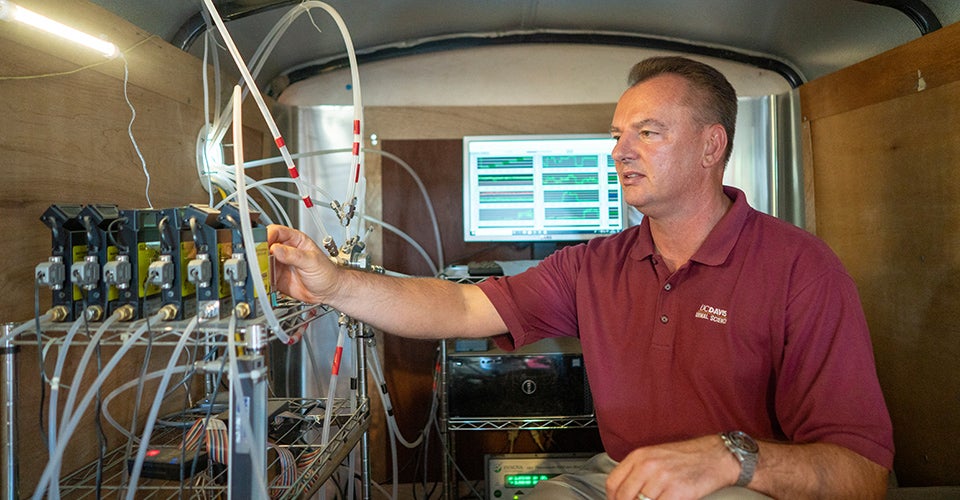
Researchers at UC Davis take projects in Vietnam, Ethiopia and Burkina Faso to boost livestock productivity through meliorate nutrition. That may be disquisitional going forward as need for meat is rising in developing countries.
"We expect by 2050 at that place is going to be a 300 pct increase in beefiness demand in Asia," said Ermias Kebreab, a professor of animal scientific discipline and manager of the UC Davis World Food Middle.
A new diet
Kebreab, Mitloehner and other UC Davis scientists are looking for ways to brand cows more sustainable and less gassy. 1 way to do that is to make their high-fiber diet easier to digest, so scientists often turn to feed supplements for this purpose. It sounds simple, but finding an affordable and nutritious additive has proved difficult.
Nonetheless, Kebreab has succeeded in finding such a supplement past feeding dairy cattle a plant way off the trough menu: seaweed.
"We've washed ane trial and showed that there is upward to a threescore percentage reduction in marsh gas emissionsby using i percent of seaweed in the diet," Kebreab said. "This is a very surprising and promising development."
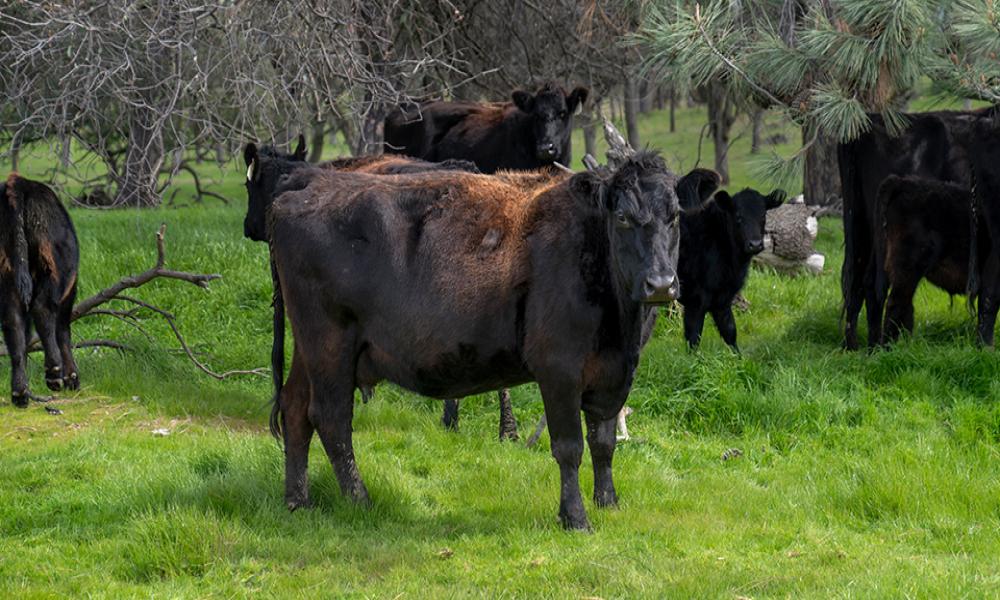
In addition to reducing methyl hydride output, the seaweed doesn't make the cows' milk taste bad. He's at present testing the diet on beefiness cattle. It could be a relatively inexpensive solution for reducing emissions.
This type of red seaweed, calledAsparagopsis taxiformis, has one big drawback: a wild harvest is unlikely to provide enough of a supply for broad adoption. Other scientists are looking for means to grow it to scale, and Kebreab remains hopeful that feed additives concord the most hope.
"I believe that we will take a solution, two or three skillful candidates, that would reduce emissions quite substantially," Kebreab said. "I tin encounter that happening in the side by side few years."
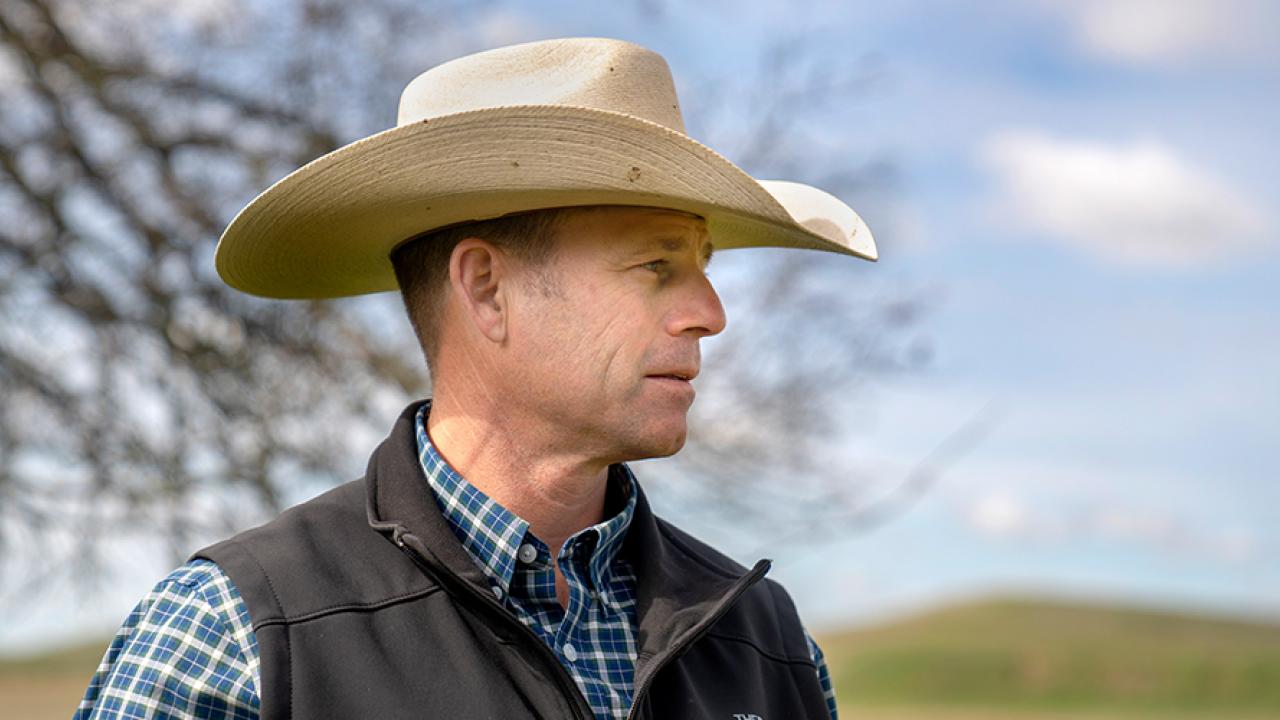
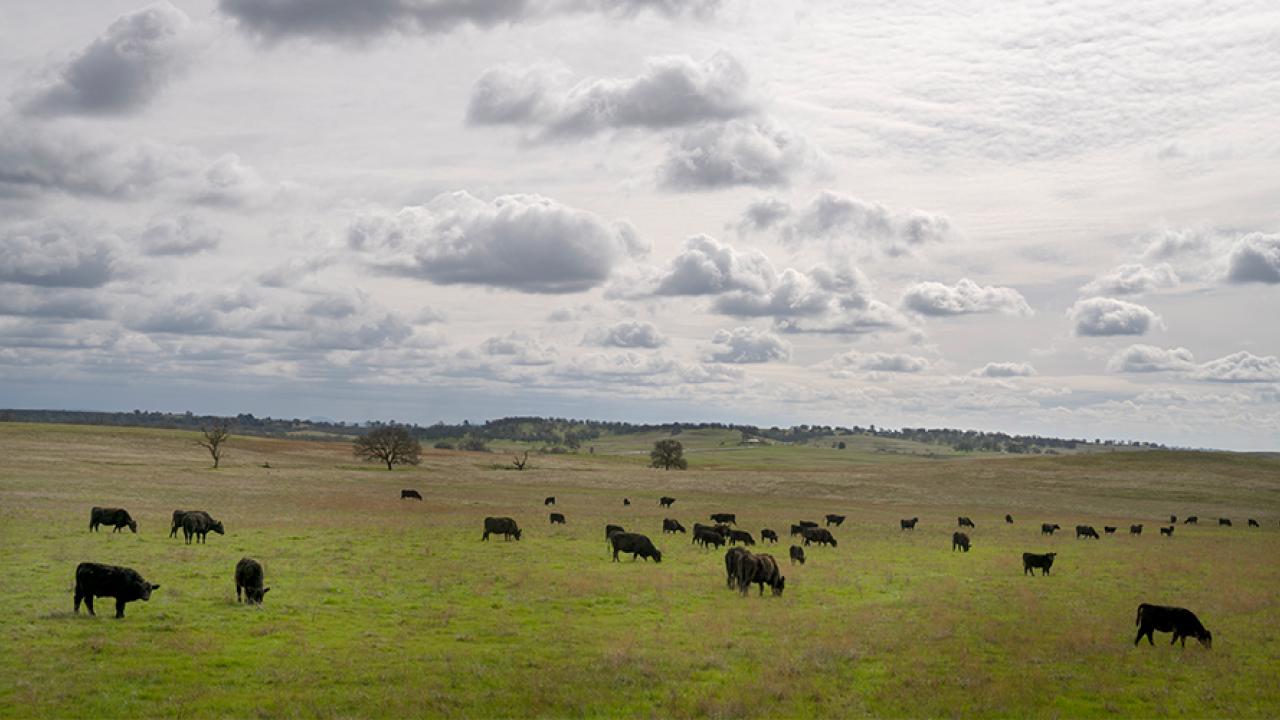
Cows every bit role of the climate change solution
Besides emitting greenhouse gases, another common criticism of beef production is that cows accept up nearly half the state in the U.s.a.. Overgrazing those lands can degrade soil health and biodiversity. Yet researchers argue that, managed correctly, cows help restore good for you soils, conserve sensitive species and enhance overall ecological part. Proper cattle grazing management can even help mitigate climate change.
On the Van Vleck Ranch east of Sacramento well-nigh Rancho Murieta, Jerry Spencer manages about 2,500 cattle. A good wintertime'southward rain this year has left them a feast of dark-green pastures. Spencer pays close attention to the grasses, making sure the animals have enough to eat simply don't overgraze. He maintains a diversity of native grasses to keep the cows good for you and rotates herds between pastures to give the plants a rest from grazing and opportunity to recover.
"You want to go out equally much as grass as possible to allow water infiltration and healthy root systems," Spencer said.
(Inquiry at UC Davis indicates simply a touch on of the ocean algae in cattle feed could dramatically cut greenhouse gas emissions from California'south ane.eight meg dairy cows.)
Maintaining healthy root systems isn't simply good for the plants. The longer and denser the roots, the more they can concur atmospheric carbon in the soil.
"One of the best and most elementary things we tin can do on rangelands to assistance mitigate climatic change is to conserve rangeland ecosystems and keep the carbon that'south already stored in rangeland soils safely stored there," said Ken Tate, a UC Davis rangeland watershed management extension specialist. California is at particular risk of rangelands beingness converted to housing and other developments, he said.
Ranchers really take little financial incentive to let their herds overgraze or permit their herd's hooves compact and degrade soils. Spencer said if the land degrades, then the cattle'south health tin can suffer equally well.
"Sustainability is keeping everything viable both economically and biologically," said Spencer. "Ranchers don't continue to exist if either ane of those are really out of balance."
While sustainable grazing practices won't eliminate methane produced by the cows, they tin offset it. According to Project Drawdown, this solution could sequester 16 gigatons of carbon dioxide by 2050.
"Proper grazing sustains working landscapes that support communities, food production and a healthy environs," Tate said.
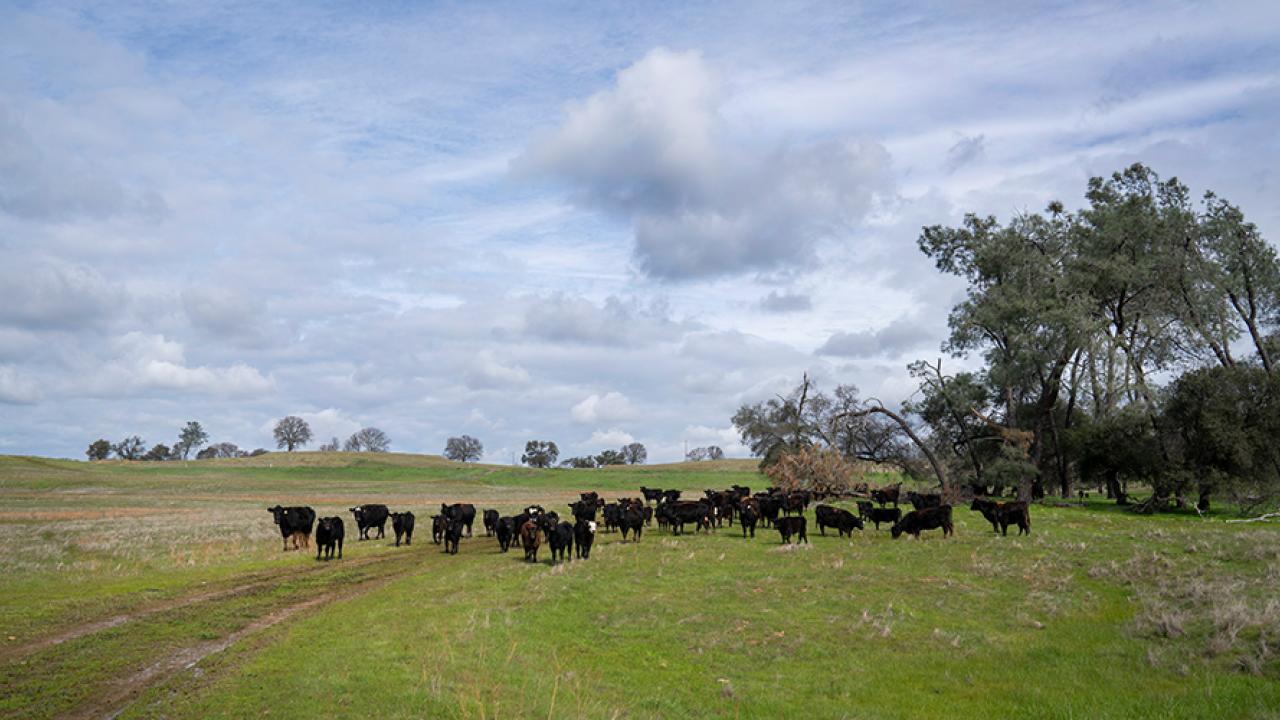
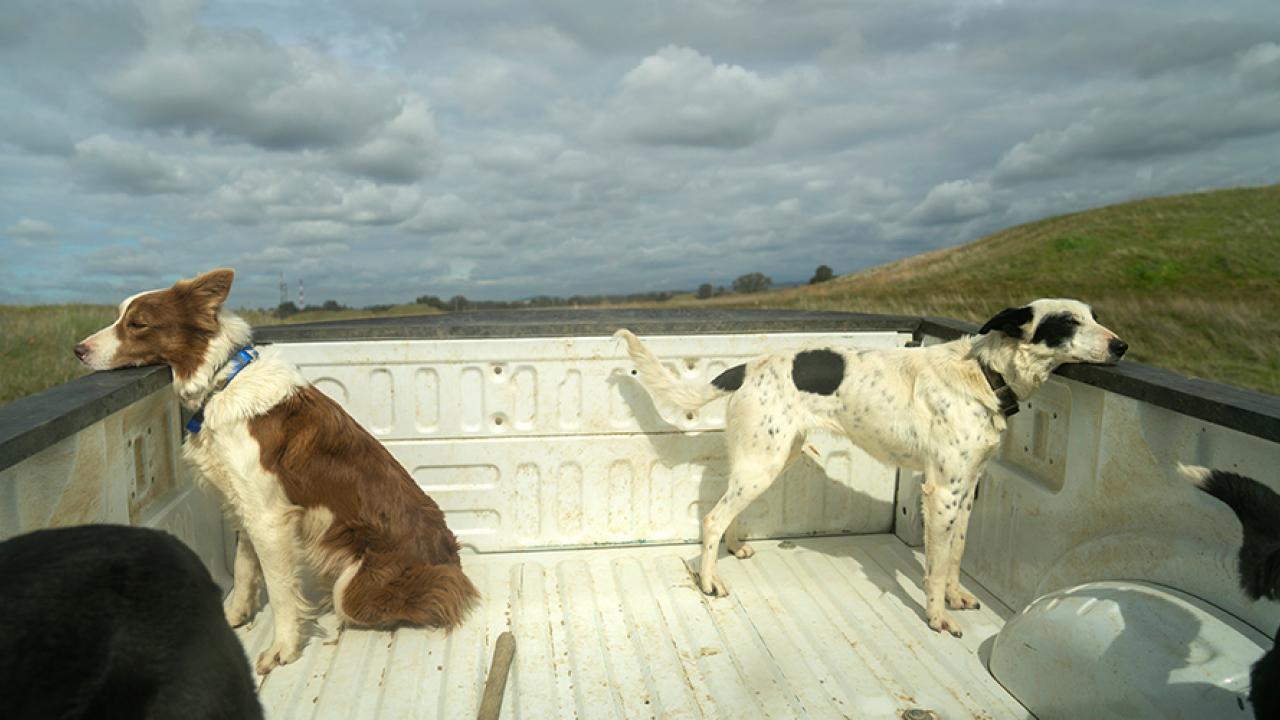
Meat-costless movement
Environmental considerations may factor into people'southward nutrient choices, only those decisions are likewise based on religious and cultural beliefs and traditions, besides as personal tastes. In low-income countries, there may non exist whatever choice. It's why Tate and Mitloehner believe the meat-gratis movement can go only so far.
"There will never be a situation where some major function of our diet volition be ruled out," Mitloehner said. "My job is non to approximate people for their eating habits. My job is to wait at how we can produce livestock and minimize those ecology impacts that practise exist."
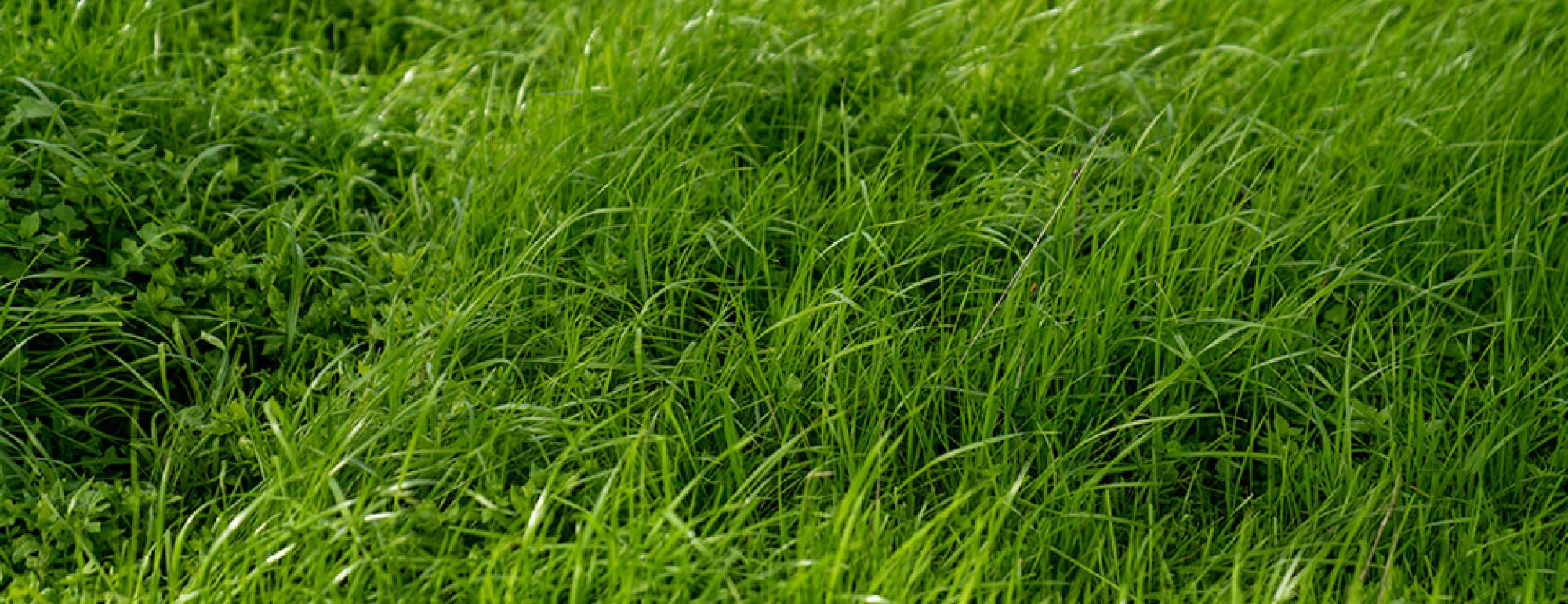
Media contact: Amy Quinton, UC Davis News and Media Relations, 530-752-9843, amquinton@ucdavis.edu
Related Stories
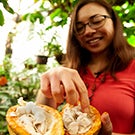
The Many Flavors of Cacao
UC Davis students and experts are working to amend empathize cacao, a vital ingredient necessary non just to chocolate production, simply to many people across the world.
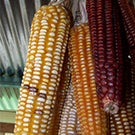
Can We Abound 1 of the World's Largest Food Crops Without Fertilizer?
A multidisciplinary team of researchers from UC Davis have discovered a variety of corn that can fix nitrogen from the atmosphere, instead of requiring constructed fertilizers.
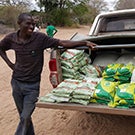
Protecting Small Farms in Mozambique From Drought
A team of agronomical scientists is testing whether insured seeds can improve food security for farmers who risk losing crops to extreme weather.
Source: https://www.ucdavis.edu/food/news/making-cattle-more-sustainable
Posted by: snowgiviled.blogspot.com

0 Response to "How Do Farm Animals Contribute To Global Warming"
Post a Comment